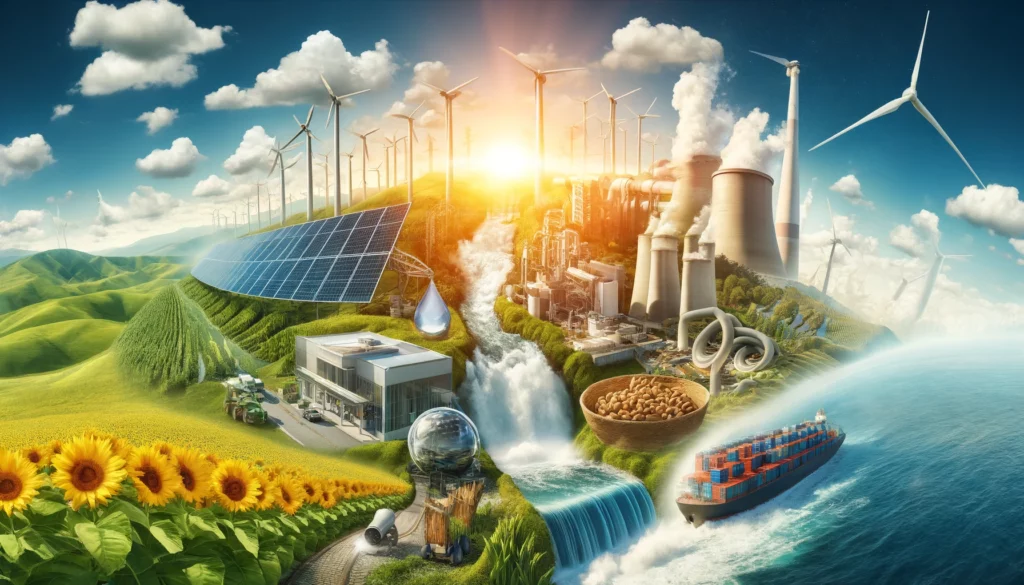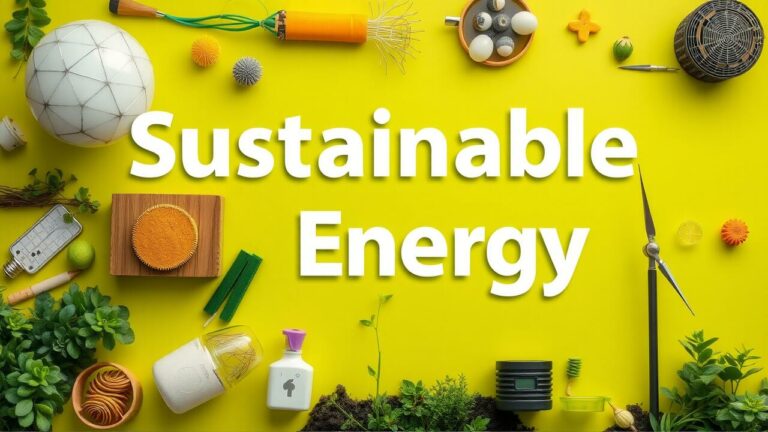In the quest for a cleaner, more sustainable future, the energy landscape is rapidly evolving. Gone are the days when fossil fuels held a monopoly on our energy supply. Today, a myriad of sustainable energy sources are not only conceptual but are actively shaping our approach to environmental stewardship and energy consumption. This article delves into the top 10 sustainable energy sources that are pivotal in our shift towards a sustainable energy future.
The Rise of Renewable Energy
Renewable energy sources are the cornerstone of sustainable energy policies worldwide. They not only reduce carbon footprints but also harness natural processes that are replenished at a faster rate than they are consumed. Here, we explore the diverse range of options that are playing a crucial role in energy transformation.
1. Solar Power
Solar energy is the poster child of renewable energy. It utilizes solar panels to capture sunlight, converting it into electricity through photovoltaic cells. The beauty of solar power lies in its versatility and scalability, from small-scale residential installations to massive solar farms. Innovations like floating solar panels are expanding their applicability even further, making them a powerhouse in the sustainable energy arena.
2. Wind Energy
Harnessing the power of the wind, wind energy uses turbines to generate electricity as the wind turns the blades. These turbines can be erected on land (onshore) or at sea (offshore). Offshore wind farms often generate more power due to the stronger and more consistent winds found at sea.
3. Hydropower
Hydropower, one of the oldest power sources, involves generating electricity through the movement of water. Traditionally, this has been through large dams, though newer technologies like tidal power and more minor, non-dam installations are emerging to minimize environmental impact.
4. Geothermal Energy
Geothermal energy is derived from the Earth’s internal heat. Facilities typically use steam that comes from the heated water reservoirs beneath the earth’s surface to power turbines and generate electricity. This energy source is not only sustainable but also provides a constant power supply, irrespective of weather conditions.
5. Biomass Energy
Biomass energy is produced from organic materials, such as wood, crops, and waste. When these materials are burned, the chemical energy is released as heat and can be used to generate electricity. With proper management, biomass can be a renewable and carbon-neutral source of energy.
6. Biofuels
Biofuels are derived from biomass and can be used to replace gasoline and diesel fuels. Ethanol and biodiesel are the most common types of biofuels and are used primarily in vehicles to reduce the use of fossil fuels.
7. Ocean Energy
Ocean energy comes from several sources, including tidal energy, wave energy, and ocean thermal energy conversion (OTEC). Each type harnesses the natural energy of the ocean’s movements or temperature differentials to generate power.
8. Hydrogen Energy
Hydrogen energy involves the use of hydrogen, often produced from water via electrolysis, as a fuel source. While hydrogen itself is a clean fuel, the sustainability of hydrogen energy depends on the energy source used for hydrogen production. Green hydrogen, produced using renewable energy sources, holds significant promise.
9. Concentrated Solar Power (CSP)
Unlike photovoltaic solar power, CSP uses mirrors or lenses to concentrate a large area of sunlight onto a small area. The concentrated light is then used as heat to produce steam to drive a turbine that generates electrical power.
10. Nuclear Energy
While nuclear energy is a contentious issue, it is considered sustainable by many experts due to its low greenhouse gas emissions during electricity generation. Advanced atomic technologies that focus on minimizing radioactive waste and improving safety are part of the future energy mix.

Conclusion for Sustainable Energy Examples
The shift towards sustainable energy is not just about adopting new technologies but also about transforming our energy infrastructure and consumption habits. Each of the energy sources mentioned offers unique benefits and challenges, and their viability depends on geographic, technological, and economic factors.
Understanding these top 10 sustainable energy examples provides a snapshot of the potential pathways we can take towards a more sustainable and energy-secure world. Whether it’s the sun, wind, water, or organic material, the solutions are all around us, waiting to be harnessed more efficiently and effectively. As we continue to innovate and improve these technologies, the dream of a fully sustainable energy system seems increasingly within reach.





